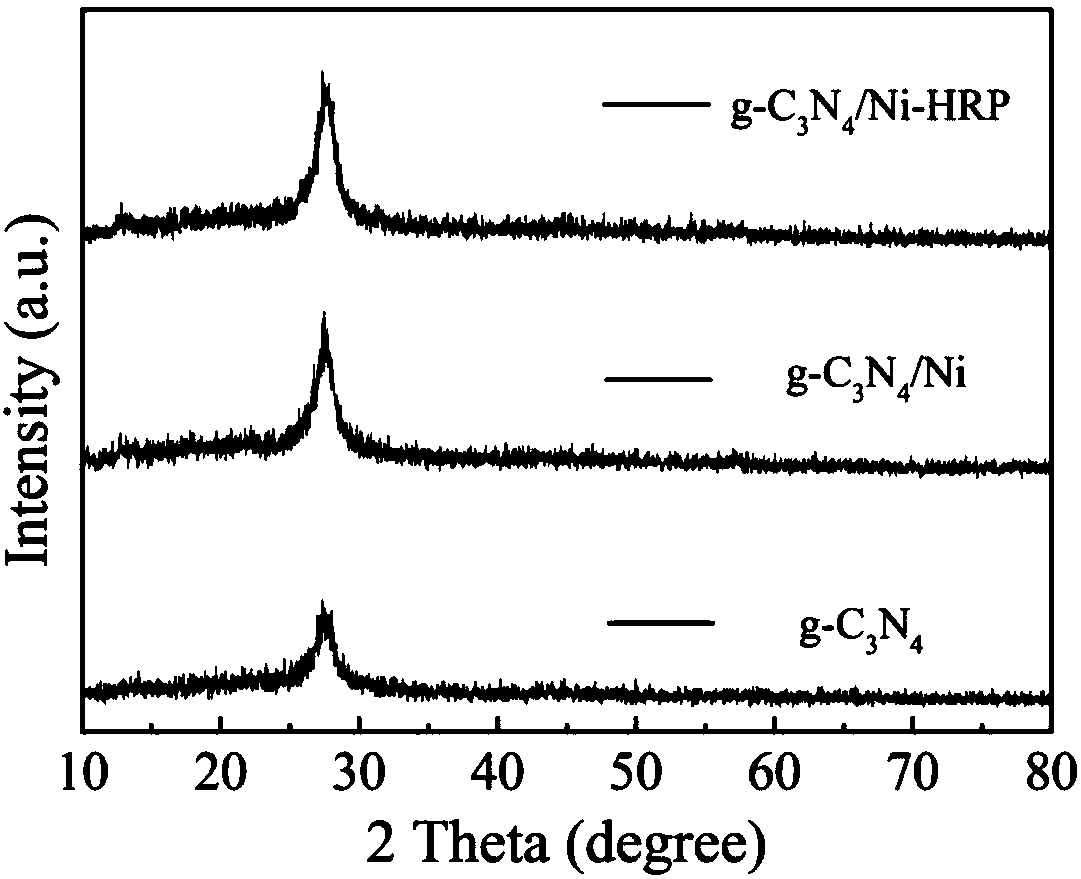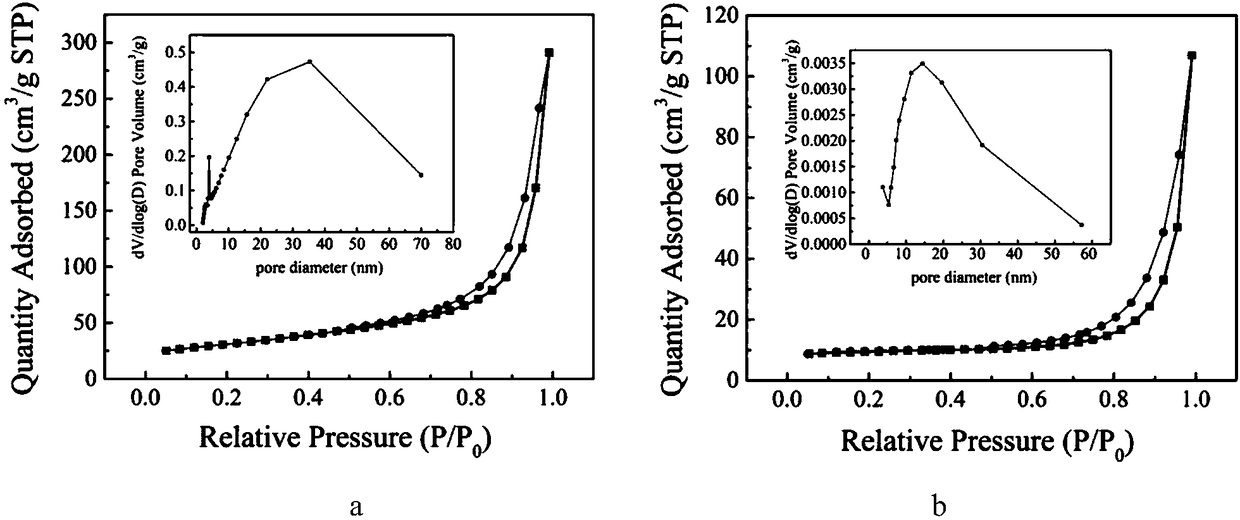g-C3N4/Ni-HRP composite photocatalyst as well as preparation method and application thereof
A photocatalyst, g-c3n4 technology, applied in catalyst activation/preparation, organic compound/hydride/coordination complex catalyst, physical/chemical process catalyst, etc., can solve the problem of high degree of photogenerated electron-hole recombination, limited application, small specific surface area, etc., to achieve the effect of improving photocatalytic performance, facilitating mass production, and simple operation process
- Summary
- Abstract
- Description
- Claims
- Application Information
AI Technical Summary
Problems solved by technology
Method used
Image
Examples
Embodiment 1
[0029] Example 1: g-C 3 N 4 Preparation of Ni-HRP Composite System
[0030] (1) Preparation of ultrathin graphitic carbon nitride (g-C 3 N 4 )catalyst of light:
[0031] a. Weigh urea, dry it in an oven at a specific temperature for 24 h, grind it and put it into a crucible, cover it, and place it in a muffle furnace at 2.5 °C for min -1 The heating rate was increased from room temperature to 550 °C and calcined for 3.5 h.
[0032] b. Take out and use 1 mol L -1 Pickle with nitric acid overnight, filter with suction, wash with distilled water 5 times until neutral, and dry in a vacuum oven for 10 h.
[0033] c. Weigh a certain amount of g-C 3 N 4 placed in a porcelain boat, in a muffle furnace at 2.5 °C min -1 The heating rate is from room temperature to 500 °C, calcined for 3.5 h, and the ultrathin g-C 3 N 4 .
[0034] (2) Preparation of g-C 3 N 4 / Ni-HRP composite photocatalyst:
[0035] Accurately weigh 50mg ultra-thin g-C 3 N 4 Place in a beaker, add 10mL ...
Embodiment 2
[0041] Example 2: g-C 3 N 4 Preparation of Ni-HRP Composite System
[0042] (1) Preparation of ultrathin graphitic carbon nitride (g-C 3 N 4 )catalyst of light:
[0043] a. Weigh urea, dry it in an oven at a specific temperature for 10 h, grind it and put it into a crucible, cover it, and place it in a muffle furnace at 2 °C min -1 The heating rate was increased from room temperature to 500 °C and calcined for 3 h.
[0044] b. Take out and use 1 mol L -1 Pickle with nitric acid overnight, filter with suction, wash with distilled water 7 times until neutral, and dry in a vacuum oven for 24 hours.
[0045] c. Weigh a certain amount of g-C 3 N 4 placed in a porcelain boat, in a muffle furnace at 2 °C min -1 The heating rate is from room temperature to 550 °C, and calcined for 3 h, the ultrathin g-C 3 N 4 .
[0046] (2) Preparation of g-C 3 N 4 / Ni-HRP composite photocatalyst:
[0047] Accurately weigh 80mg ultra-thin g-C 3 N 4 Place in a beaker, add 15mL of disti...
Embodiment 3
[0049] Example 3: g-C 3 N 4 Preparation of Ni-HRP Composite System
[0050] (1) Preparation of ultrathin graphitic carbon nitride (g-C 3 N 4 )catalyst of light:
[0051] a. Weigh urea, dry it in an oven at a specific temperature for 20 h, grind it and put it into a crucible, cover it, and place it in a muffle furnace at 5 °C for min -1 The heating rate was increased from room temperature to 700 °C and calcined for 4 h.
[0052] b. Take out and use 1 mol L -1 Pickle with nitric acid overnight, filter with suction, wash with distilled water 7 times until neutral, and dry in a vacuum oven for 20 hours.
[0053] c. Weigh a certain amount of g-C 3 N 4 placed in a porcelain boat, in a muffle furnace at 5°C min -1 heating rate from room temperature to 600 °C, and calcined for 4 h, the ultrathin g-C 3 N 4 .
[0054] (2) Preparation of g-C 3 N 4 / Ni-HRP composite photocatalyst:
[0055] Accurately weigh 100mg ultra-thin g-C 3 N 4 Place in a beaker, add 20mL of distille...
PUM
 Login to View More
Login to View More Abstract
Description
Claims
Application Information
 Login to View More
Login to View More - R&D
- Intellectual Property
- Life Sciences
- Materials
- Tech Scout
- Unparalleled Data Quality
- Higher Quality Content
- 60% Fewer Hallucinations
Browse by: Latest US Patents, China's latest patents, Technical Efficacy Thesaurus, Application Domain, Technology Topic, Popular Technical Reports.
© 2025 PatSnap. All rights reserved.Legal|Privacy policy|Modern Slavery Act Transparency Statement|Sitemap|About US| Contact US: help@patsnap.com



